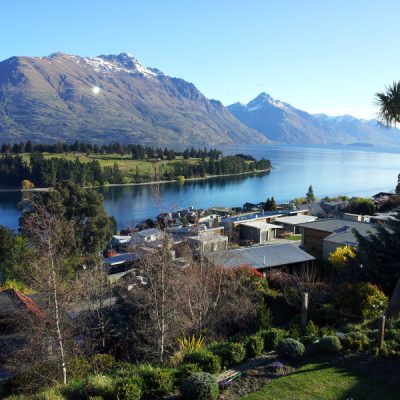When we think of weather, we tend to categorize it in terms of one of two ideals — good weather or bad weather. The former is the category that we associate with positive things; holidays, sun, ideal agricultural conditions and so on, whilst bad weather tends to be associated, understandably enough, with negative phenomenon such hurricanes, tornadoes, cyclones, flooding, forest fires etc.
Although we often complain about the weather here in Ireland (the summer of ’18 being an exception) the reality is that we’re actually quite lucky because we rarely suffer from any extremes at either end of the weather spectrum. Our weather is largely a result of both our geographic location; our proximity to other land or sea masses and the topography of our country. There are, however, a relatively small number of areas around the world that enjoy what we refer to as ‘micro climates. A micro-climate is defined as the climate of a very small or restricted area that differs from the climate of the surrounding area. Such differences are usually explained by topographical features such as the presence or absence of nearby mountains, valleys etc.
Why am I musing all about micro-climates in this week’s blog? Because last week, I was enjoying what is generally acknowledged as the best micro-climate in the world — that of Gran Canaria and Puerto de Mogan in particular. The Canary Islands should be hotter than they actually are but their temperature is moderated by cool sea breezes sweeping in off the Atlantic ocean. They should also be cloudier than they are because the prevailing trade winds sweep the clouds south over the islands but due to the hot air rising from the mountainous interior of Gran Canaria, the clouds just sweep around either side of the island, as if being protected by some invisible force. Indeed, there is a name for this phenomenon which is called the Von Karman Vortices. According to a study written by Thomas Whitmore, manager of the climatological research department at the University of Syracuse (USA), published by Consumer Travel Publications in 1996, with the title “Pleasant Weather Ratings“, Gran Canaria has the best climate in the world.
Of course, there are a lot of other contenders out there including;
- The Hawaiian Islands
- Costa Rica
- Ecuador
- Kenya (Mombasa)
And whilst one wouldn’t necessarily be surprised by some of the names on the above list, there are other famous micro-climate zones around the world that you may be less familiar with including;
- The San Francisco Bay area
- Chesapeake Bay
- Halifax, Nova Scotia
- Calgary, Alberta
- Tarifa in Andalucia
- Ticino, Switzerland
- Santiago in Chile
Ticono is a particularly interesting case as the Italian-speaking canton which is part of Switzerland’s wine-growing region enjoys such a unique micro-climate that palm trees grow by its lakes and banana trees flourish (although it must be said that the climate there isn’t quite warm enough for the trees to bear fruit!)
So, if you’re looking for the world’s sweet-spot when it comes to the ideal climate — not too hot, not too cold — then believe it or not, you’re going to find it in an all too familiar place, the island of Gran Canaria — also known as the ‘miniature continent’ for its rich variety of micro climates.





